On View
Ryan Gander Talks Art, Curation, and Politics for His ‘Night in the Museum’ Exhibition
The show involves figurative sculptures "looking" at blue art.
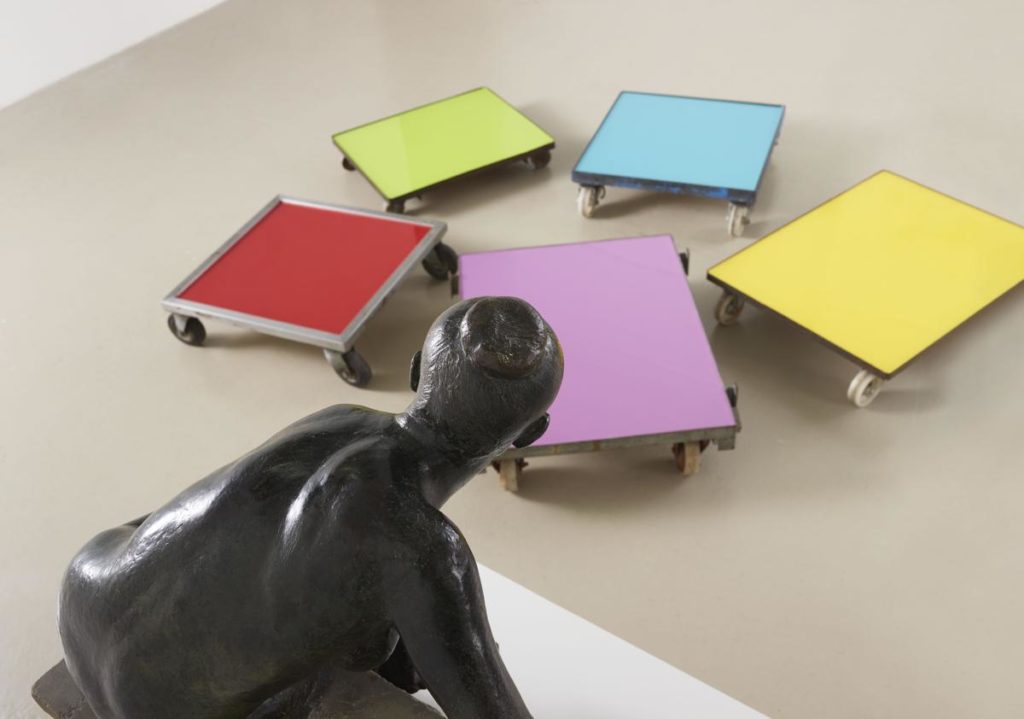
The show involves figurative sculptures "looking" at blue art.

Carol Civre

Ryan Gander, one of Britain’s leading contemporary artists, never ceases to surprise and enthrall with his varied practice. Never sticking to any particular style or category, Gander tackles ideas through a variety of mediums, from sculpture and installation to language and commercial products. His artwork is frequently seen as a harmonious mix of complex and conceptual notions carried out using humorous and nonsensical elements. Narrative plays a big role in Gander’s practice, as many of his pieces serve to tell a story or share a thought.
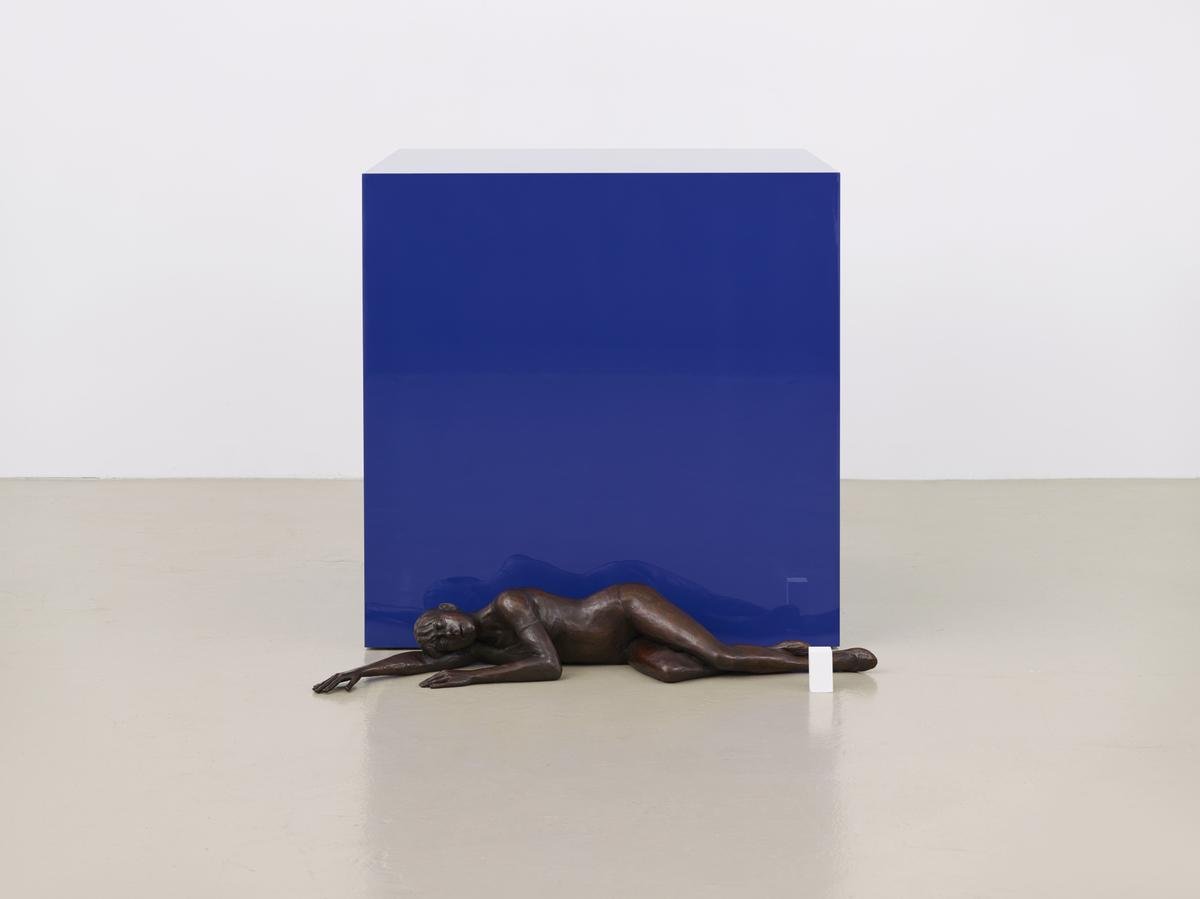
Ryan Gander, As old as time itself, slept alone (2015-16). Photo by Anna Arca courtesy of Longside Gallery, Yorkshire Sculpture Park.
For the Arts Council Collection’s exhibition “A Night in the Museum,” which opened at Yorkshire Sculpture Park’s Longside Gallery on July 6, Gander assumes the role of not just artist, but also curator. This exhibition brings together more than thirty works form the Arts Council’s wide collection, including a new piece from Gander himself, As old as time itself, slept alone (2015-16).
We were able to speak to the artist about his selection process for the exhibition, the significance of his dual role as curator and artist, and about the tumultuous politics of his home country post-Brexit.
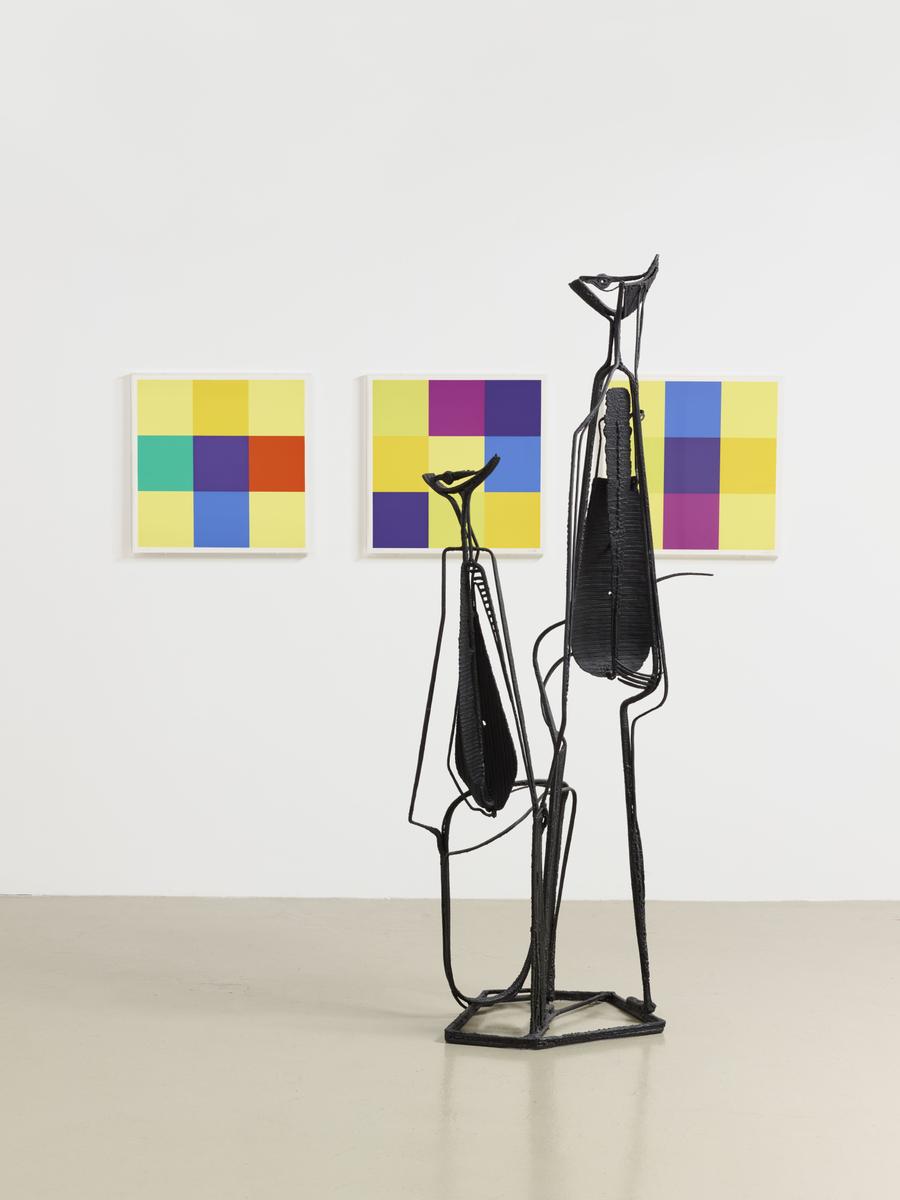
Richard Paul Lohse, Kreuz aud Gleichung und Kontrast and Horizontal – und Vertikalpositionen aus Extrem – und Nachbarfarben, (1975) (back). Reg Butler, Girl and Boy, (1951) (front). Photo courtesy of Longside Gallery, Yorkshire Sculpture Park.
As curator of the “Night in the Museum” exhibition you were invited to select art works from the Arts Council Collection, which features over 8,000 works of British contemporary art. You narrowed this vast collection down to only 30. How did you go about this laborious process?
It wasn’t laborious it was exhilarating, I learned more in a couple of weeks than in the last couple of years, but the collection is so diverse and so large that I was like a kid in a candy store. So I went about it very logically, anally even. I set a series of methodological constraints to restrict me, to narrow down the choice. The formula consisted of only showing figurative sculpture of the human form and artworks containing the color blue. These works were then paired into a spectator (the figure) and the spectacle (the work containing blue) and positioned so that the figure became almost another visitor to the exhibition, with a directed gaze to the artwork it was paired with.
The color blue is of some significance to you both in the context of this exhibition as well as in your general practice. What about this color draws you to it?
Poetically, blue is the color of an untuned television, the depth of the ocean and the atmosphere, for me blue is the color of nothingness and of the absolute depth of the infinite. It’s a kind of zero point/neutrality of color. In ancient Egypt blue (irtyu) was the color of the heavens and hence represented the universe. It’s a color of neutrality, rebirth, a beginning. Logically from my perspective, it is a good color for a stereotype of what we think of contemporary art. If Bugs Bunny walked into a gallery, the contemporary artwork he would see would most likely be an abstract organic shape in ultra-marine blue… within the history of art it seems to be a sort of cliché, because we are all in agreeance of the contemporaneity of the color.
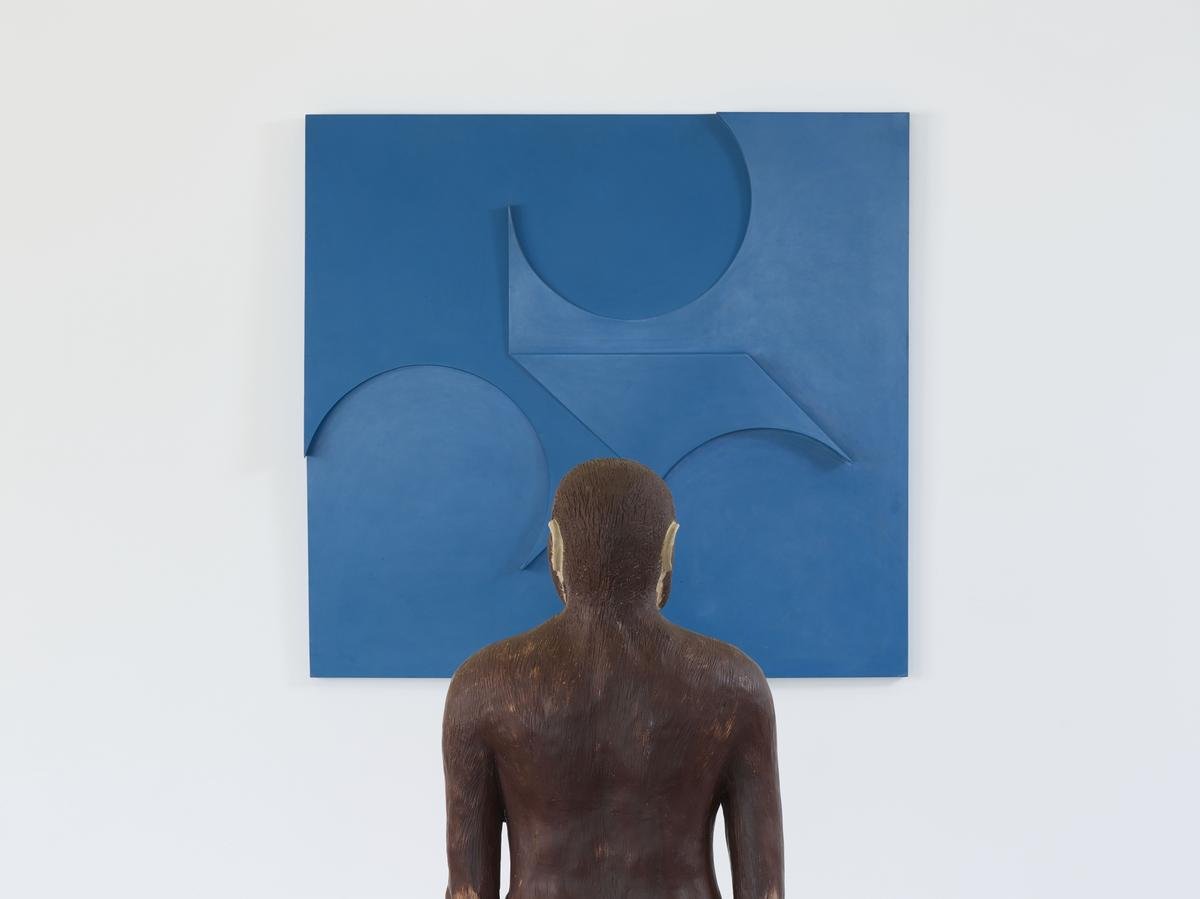
Gareth Evans, Blue No. 30, (1964) (back). Kerrz Stewart, Untitled (Lucy), (1996), (front). Photo by Anna Arca courtesy of Longside Gallery, Yorkshire Sculpture Park.
Do you think that the works you selected form an exhibition that as a whole reflects your personal style?
Idiosyncrasies of course will always prevail, even in a logical system. To an extent my taste was formed by “things I wanted to see out in real life” as opposed to on the page of a catalog or database, but it would be wrong to say that that followed a personal aesthetic, as one of the objectives of the work I make is to try to avoid stylistic signature or conformity to repetitive aesthetics, even if I don’t always achieve it. Conceptually I guess there is an underlying interest in the idea of the gaze, the viewer and the viewed, who exactly is looking at what and why… I would hope the show is diverse, full of collisions and clashes, that’s the type of show that ordinarily I am challenged by.
You are not only curating this exhibition but you are also one of the artists featured in it. Do you find yourself running into any conflicts when assuming this dual role?
I didn’t want to put my work in the show, it’s something I have always disagreed with. However, it was a requirement that the 70th anniversary commission of the Arts Council Collection was shown, so it is in a side gallery, it doesn’t interfere with the other artworks. Although strangely, and I didn’t fully realize this until we were installing the show, but my work is the only figure that turns its back on its counterpart/artwork.
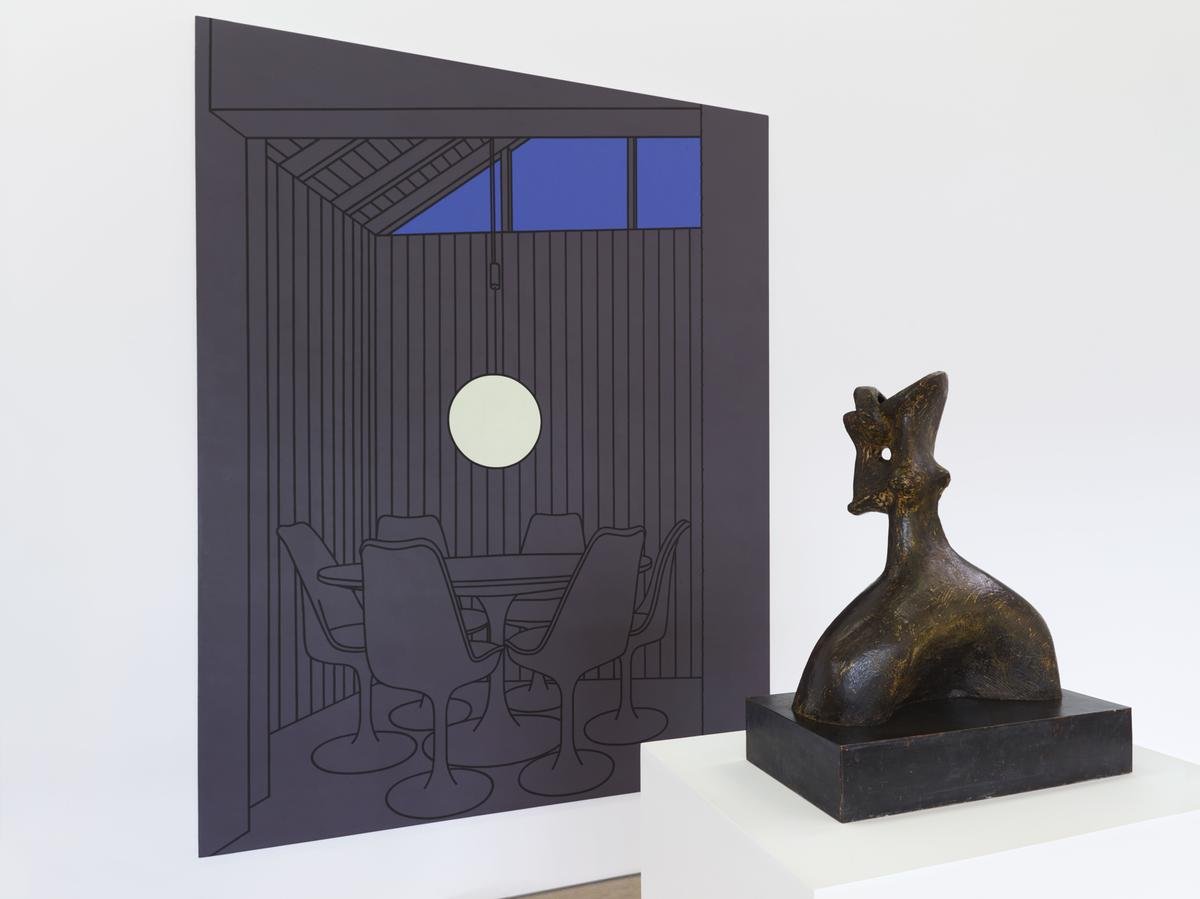
Patrick Caulfield, Dining Recess, (1972) (left). Henry Moore, Head of a King, (1952-1953) (right). Photo by Anna Arca courtesy of Longside Gallery, Yorkshire Sculpture Park.
Your piece included in the exhibition, titled As old as time itself, slept alone, is commissioned by the Arts Council Collection, which relies on public funding. You shared your opinions of Brexit with our readers previously—how you think Brexit might affect this type of funding in the future?
Asking me that is like opening a can of worms… I don’t think anyone can predict anything at the moment, not even Mystic Meg, everything is uncertain and in turmoil, whilst a few weeks ago everything was quite stable and positive.
The title of the exhibition might be familiar to the public because of its relevance in popular culture. Is there any relationship between the Ben Stiller film titled Night at the Museum and this exhibition, which shares a strikingly similar title?
I’m not sure because I’ve never see the film, but I do know that the name isn’t “exactly” the same so we are totally safe legally… But essentially the show for me is about activating two artworks by making them collide. It sounds like a Woody Allen gag he would serve up at an Upper East Side dinner party, but “What did one artwork say to the other artwork?” … Well I guess a multitude of things, it depends on who is watching…
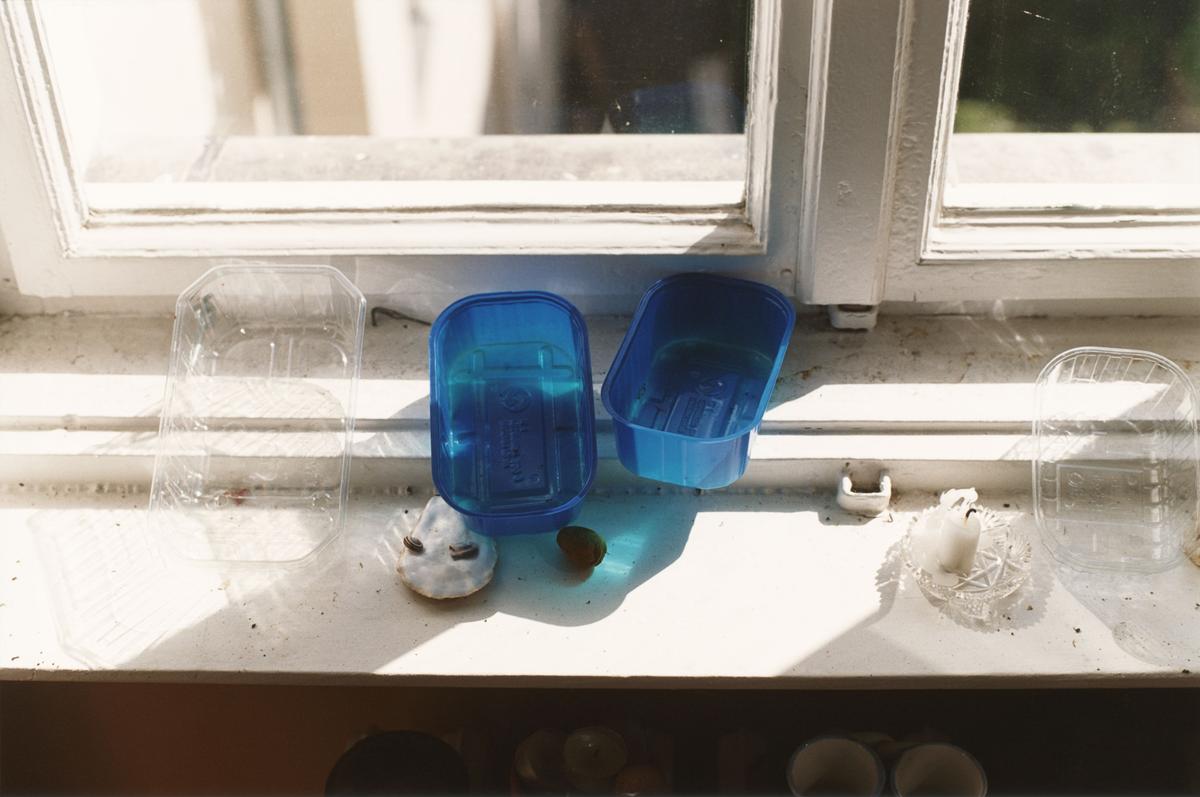
Wolfgang Tillmans, Beerenstilleben, (2007). Photo courtesy of Longside Gallery, Yorkshire Sculpture Park.
Ryan Gander, “Night in the Museum” will be on view at Longside Gallery from July 16 – October 16, 2016.